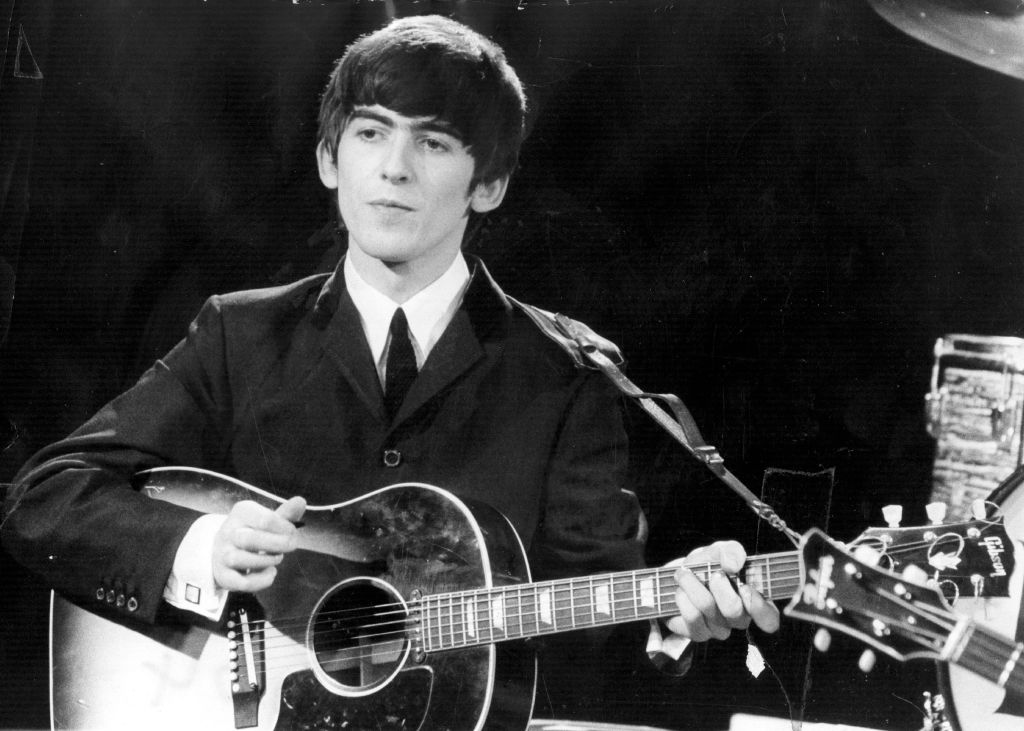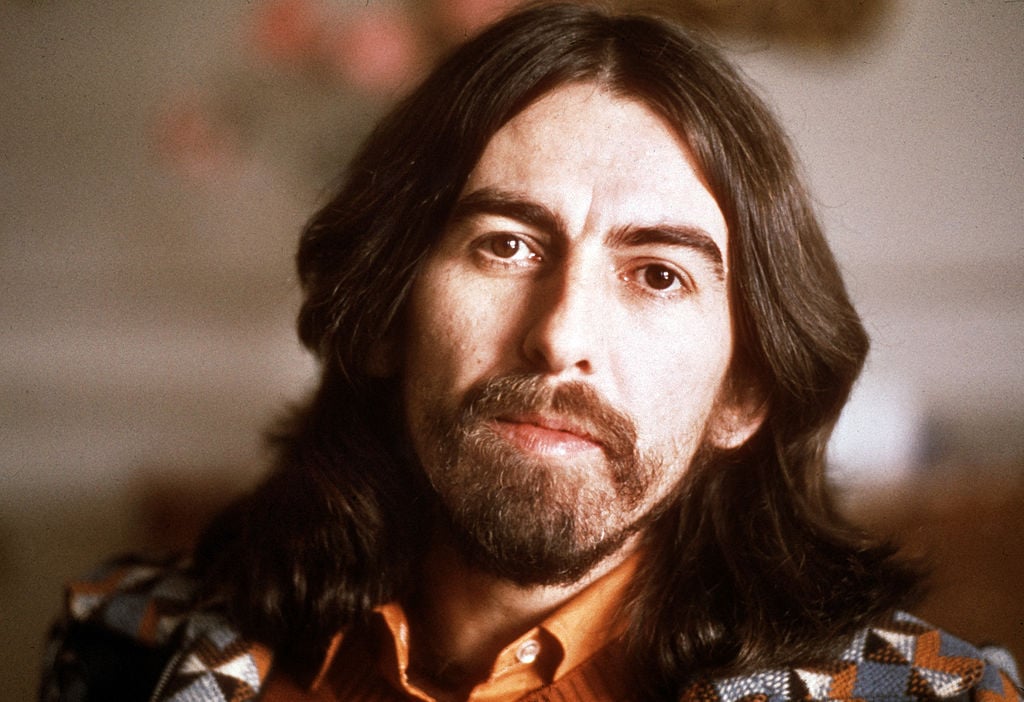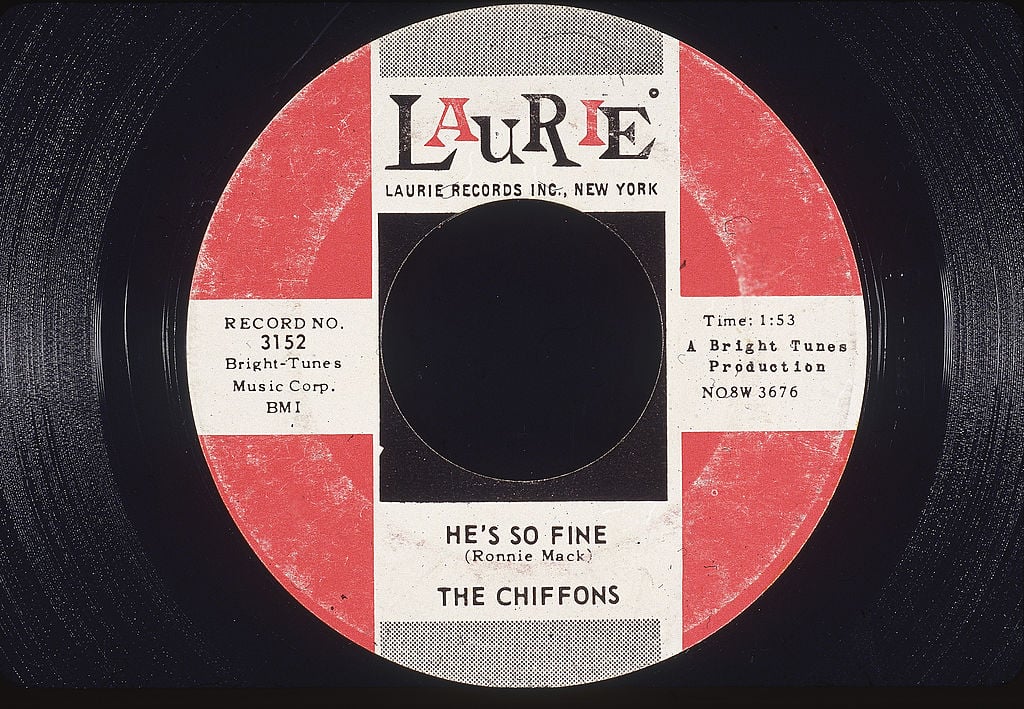The Controversial True Story Behind George Harrison’s ‘My Sweet Lord’
After the Beatles tragically broke up in the early 1970s, each member of the band went on to have a solo career. George Harrison proved he could be a great solo artist with his masterpiece “My Sweet Lord.” Let’s look at the history and controversy behind one of the most iconic Beatles solo songs.

George Harrison’s spiritual conversion
George was raised Catholic but converted to Hinduism later in life. His Hindu beliefs inform much of his work as a Beatle and as a solo artist. After he began to take an interest in Indian spirituality, three Hindu gurus – Sri Yukteswar Giri, Sri Paramahansa Yogananda, and Sri Mahavatar Babaji – were depicted on the cover of the Fab Four’s seminal album Sgt. Pepper’s Lonely Hearts Club Band. After the Beatles broke up, George recorded a version of the Hari Krishna Mantra and used images of the Hindu god Krishna in his album art.
George Harrison creates his masterpiece: ‘My Sweet Lord’

The most famous expression of George’s spirituality would be “My Sweet Lord.” The song’s lyrics are both inclusive and provocative. They detail George’s desire to be close to God and include contrasting refrains of the Jewish/Christian term “Hallelujah” – which means “Praise God” – and the Hindu term “Hare Krishna” – which denotes devotion to Lord Krishna.
George’s use of terminology from different religions might strike some as incongruous or blasphemous. According to the book While My Guitar Gently Weeps, George’s lyrical choices were designed as a call for spirituality without sectarianism. The song expresses a universal religious desire for closeness to God, meaning that people of multiple religions could use it as a hymn. The book suggests that the religious roots of the song are more than just lyrical, as “My Sweet Lord” uses some of the same chord changes as the popular Christian hymn “Oh Happy Day.”
The most infamous lawsuit in music history
Sadly, Harrison would get in trouble for similarities between “My Sweet Lord” and a different song – “He’s So Fine” by the Chiffons. According to AllMusic and Stereogum, the publisher of “He’s So Fine” – Bright Tunes – sued George for copyright infringement. Because George and the song’s producer, Phil Spector, were both working in the music industry at the time that girl groups like the Chiffons were at their commercial peak, it seems possible that they could have unintentionally been influenced by “He’s So Fine.”

George repeatedly attempted to settle the lawsuit, but Bright Tunes was not interested in settling out of court. The Chiffons capitalized on the attention they received from the lawsuit by releasing a cover of “My Sweet Lord” in 1975. The following year, Judge Richard Owen ruled that George had unintentionally plagiarized “He’s So Fine.” George was forced to pay Bright Tunes some of the proceeds from his album All Things Must Pass and 75% of the money he earned from “My Sweet Lord,” totaling $1.6 million.
Even if George took some inspiration from the Chiffons for his most iconic solo hit, that doesn’t diminish what he accomplished with “My Sweet Lord.” The song has so much more power and gravitas than most pop hits. “My Sweet Lord” will live on as one of the finest achievements of any Beatle.


